Living Better: How to Become an Organizational Ninja
Living Better: How to Become an Organizational Ninja
- Living Better: New Year, New You
- Living Better: Starting at the Core with Flexibility
- Living Better: How to Become an Organizational Ninja
- Living Better: Be Outside, Be Active and Be Thankful
- Living Better: What’s the Harm in Sugar and Sweeteners?
- Living Better: Giving Back, Paying it Forward and Helping Others
This may seem a bit off topic to you for an ITS article, but allow me to present my perspective. Being better organized in all aspects of your life, reduces stress and sharpens your focus to allow you to work at a higher level. Almost ninja like!
I’m by no means where I’d like to be with my organizational skills, but I’ve been working hard at it for many years. It’s been a constant evolution that started when I was young. One caveat to what I’ll get into today; I have what the doctors call a “touch” of OCD. I’m obviously joking and don’t really have a diagnosed condition, but I am obsessive about organization and for a good reason. It works for me. It allows me to feel comfortable with what’s around me so that I can clear my mind and focus on the important tasks around me.
This being said, I relate organization to quelling the voice in my head that continues to remind me to put things away, or won’t let go to tasks. More on this in a bit. Everyone has those things that nag at them constantly, the to-do’s, the voicemail to return, the text message to answer, the dreaded emails that pile up. I’ll go into some techniques and tools that have helped me along the way and will hopefully help you as well.
My hope with this article is that you’re able to use this advice to help your stress level in some way, by being better organized and live better. This series is all about being healthy, which doesn’t just relate to your immune system.
Health-y [hel-thee] adjective: Possessing or enjoying good health or a sound and vigorous mentality: a healthy body; a healthy mind.
Organization and Getting Things Done
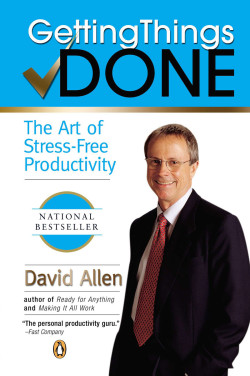 Everything has a place, right? Determining what to do with something is one of the core principles I follow and one that I honed thanks to David Allen, the author of Getting Things Done: The Art of Stress-Free Productivity. In his book, Allen talks about how we often look at a “to-do” the wrong way. While you may have “clean the garage” on your list, that might encompass a large list of separate action items, like “put up rake” or “take bag of old clothes to Goodwill.” By breaking down what Allen refers to as projects, into separate action items, it makes a project more manageable. These smaller action items can be accomplished in your down time or give you a better perspective at just what’s needed to mark a project as done.
Everything has a place, right? Determining what to do with something is one of the core principles I follow and one that I honed thanks to David Allen, the author of Getting Things Done: The Art of Stress-Free Productivity. In his book, Allen talks about how we often look at a “to-do” the wrong way. While you may have “clean the garage” on your list, that might encompass a large list of separate action items, like “put up rake” or “take bag of old clothes to Goodwill.” By breaking down what Allen refers to as projects, into separate action items, it makes a project more manageable. These smaller action items can be accomplished in your down time or give you a better perspective at just what’s needed to mark a project as done.
Grouping all your action items by context can also help as well, for instance, you may have quite a few projects that each have individual action items to make telephone calls. If you knew all the calls you needed to make and had a few minutes around the phone, you could put a dent into those and move those respective projects closer to completion.
Just thinking about everything around me in this project/next-action mentality, has tremendously helped my overall productivity. There’s so much more to Getting Things Done or GTD then I have time to cover in this overview article, so do yourself a favor and pick up a copy of his book. It’s been out for awhile and is relatively inexpensive. I also use a few computer programs to help me with the GTD system.
Organizational Software
Part of the GTD system is ensuring that you get your thoughts out and into a trusted system so that your brain can let go. Remember earlier when I talked about “quelling the voice in my head that continues to remind me to put things away, or won’t let go of tasks?” This is a huge step in helping you to live healthier. It wasn’t until I read David Allen’s description of what was actually occurring, that this clicked for me. Until you put something you need to do into a trusted system that you know you’ll review and remind yourself about later, your brain can’t let it go. It will continue to remind you to do something until it gets done. Now take that and add in all those things right now that are pulling at your attention, lots going on up there, right?
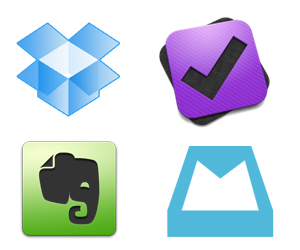 You need a trusted system that you can use to review all those things. A simple to-do list might work, but if you follow the project/next-action core of GTD, you’ll need something better. While I’d again encourage you at this point to read GTD, I’ll get into what I use to manage my life.
You need a trusted system that you can use to review all those things. A simple to-do list might work, but if you follow the project/next-action core of GTD, you’ll need something better. While I’d again encourage you at this point to read GTD, I’ll get into what I use to manage my life.
OmniFocus – Based on GTD, OmniFocus is designed to quickly capture your thoughts and ideas to store, manage and help you process them into actionable to-do items.
What I really love about OmniFocus is its ability to not only manage projects and next actions, but to truly organize those things with folders, due dates and integration with a calendar application.
Evernote – The application with the “never forget” elephant logo, makes it easy to remember things big and small from your everyday life using your computer, phone, tablet and the web.
I use Evernote for collaboration with others at ITS, as well as personally for storage of documents that I can easily reference on any of my devices. While OmniFocus is great for defining projects and next actions, it’s not meant to be a storage database for the support materials that accompany the projects you have on your plate. Evernote is perfect for this.
Calendar – For me this is iCal on my Mac, but I’m growing more and more dissatisfied with the new iOS7 version of it, that I’m looking for a replacement. I do like how it syncs with all my devices though.
Having a calendar is important for date specific items, things that have to be done on that specific date. If what goes on your calendar is treated as law, you’ll force yourself to not put anything on there that won’t get done. This can also be reminders you need on a specific date. I like iCal because it has pop-up reminders that force me to look at them and I can set as many of them as I want at whatever intervals I want. Sometimes I need a little more prodding or advance notice something is coming up.
Dropbox – Put your stuff in Dropbox and get to it from your computers, phones, or tablets. Edit docs, automatically add photos and access videos from anywhere.
I live on a computer and online, keeping all my documents organized is very important to me as well. I can’t stand a cluttered desktop and everything has a place on my computer, just as it does in the physical world. I use a combination of folders and Dropbox to make this work. Dropbox is great because it keeps documents in sync across multiple devices. While Evernote does this as well, Dropbox is specifically geared towards storage and I have a lot of it. My photos, documents, videos and more, amass quite a library and I need a way to access it anywhere and on any device. This is where Dropbox comes in.
Mailbox – Email isn’t going anywhere, why should you let it control your life? Mailbox is an app for iOS that enables you to quickly swipe messages to your archive or trash. Scan an entire conversation at once with chat-like organization or snooze emails until later with the tap of a button.
Using Mailbox has been revolutionary for me. While it’s still only available for iOS and Gmail, the revolutionary design of “snoozing” an email or getting it out of your inbox until a later time that you designate is amazing. Not every email needs to be responded to immediately and re-scheduling when emails reenter my inbox helps me keep it clear and stay on top of my correspondence. Until Mailbox came along I could have hundreds of emails in my inbox at once.
Thanks to Mailbox (and better time management) I’ve been able to respond to what I need to and stagger things that I can get back to a bit later. I’ve also been proud to have never declared email bankruptcy, the thought makes me cringe! A tip of mine is to not use your email inbox as a to-do list, if an email is actionable, make sure you put that action into a trusted system so you know that task will get done.
Physical World Application
Talking about how to stay organized digitally is great, but how does this all work with physical objects? The exact same way, until you find out “what” to do with something, it will continue to live where it’s at, taking up space and causing your brain to remind you. That stack of mail on the kitchen table, the chair in the corner that’s waiting on you to fix, all these things can be handled with the same GTD system mentioned above. That and a good file cabinet.
David Allen goes into detail on how to organize your file cabinet with a single A-Z index and a label maker. A label maker is something I can’t live without anymore, it’s about as OCD as you can get when it comes to physical organization. I’ll echo what Allen recommends, which is a top of the line file cabinet with an internal divider to help your file folder stand up (ditch the hanging folders.) Don’t skimp here and get a drawer system that’s cheap. You don’t want to be distracted by a squeaky drawer or one that eventually won’t close. After all the hard work you’ll do organizing your life, you don’t need an additional project to “replace file cabinet.”
Allen also recommends simply using manila file folders, by keeping a stack of them and a label maker at the ready, (all label makers aren’t created equal, the Brother Label Maker I’ve linked to is the best one I’ve found) you can quickly file things and get them out of your inbox. I’d also recommend buying reinforced tabbed file folders, they’ll last longer and look better after months of thumbing through your folders. While I didn’t really mention it above, the GTD system is all about getting “in” to “empty.”Getting your inbox processed and empty means that you’re deciding what to do with everything. Is is something that’s actionable? Are you waiting for someone else to move it along? Is it trash? Asking yourself important questions about just what “it” is, will allow you to get moving on what to do with it.
Allen also has a fairly unique system using an additional 43 folders to bring physical documents to your attention on specific days. Basically utilizing the same functionality your calendar has, but with documents in folders. I won’t get into this in too much detail, but will say it’s a manual system and works if you have the patience to utilize it.
Something I’ll also mention about items that are physical in nature, is the trusty pen and paper. Fancy apps are great and I utilize them heavily, but as simple as it is to add something to a digital “inbox,” there’s always a time and place for a good pen and notebook. I personally favor Field Notes, as I can put one into a back pocket or cargo pocket and always have paper on me. (FYI, the pen above is a TiBolt, which I reviewed here)
While I need to go back later and process the information I write down, it’s not always easy to use a phone to take notes, nor is it always courteous. I take being courteous very seriously and haven’t used a ringtone on my phone in years, it’s always set to vibrate. With smartphones being in peoples hands almost constantly these days, it’s often relaxing to me to write things down that pop into my head and feel safe in knowing I’ll go back and process them later. Plus, not having a smartphone in your hand helps with situational awareness.
Avoiding Clutter
Hopefully you’ve read a few things in this article you can start looking into that will help you avoid clutter, organize your life and lead you down a path to a healthier life. Clutter kills; those things we let sit, whether they’re digital or physical, are pulling at us whether we realize it or not. It’s time to take control of your stuff and what to do about it. Strive to become an organizational ninja and start working at a higher level of productivity!
What are your tips for avoiding clutter and dealing with all the to-do’s that come up in your life? I’d love to hear what solutions you have.






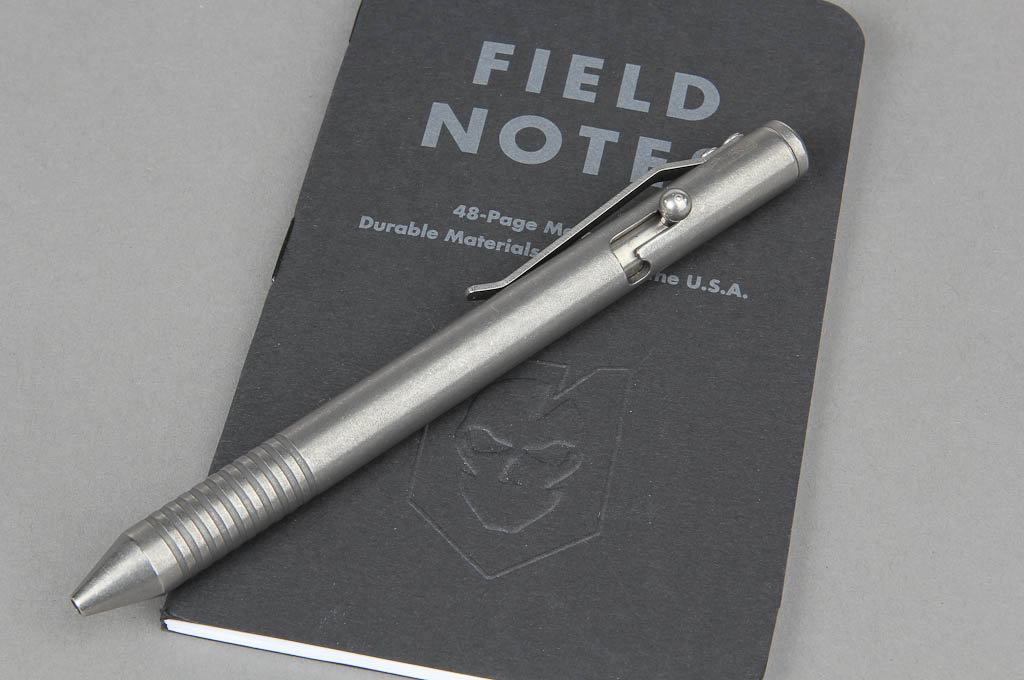
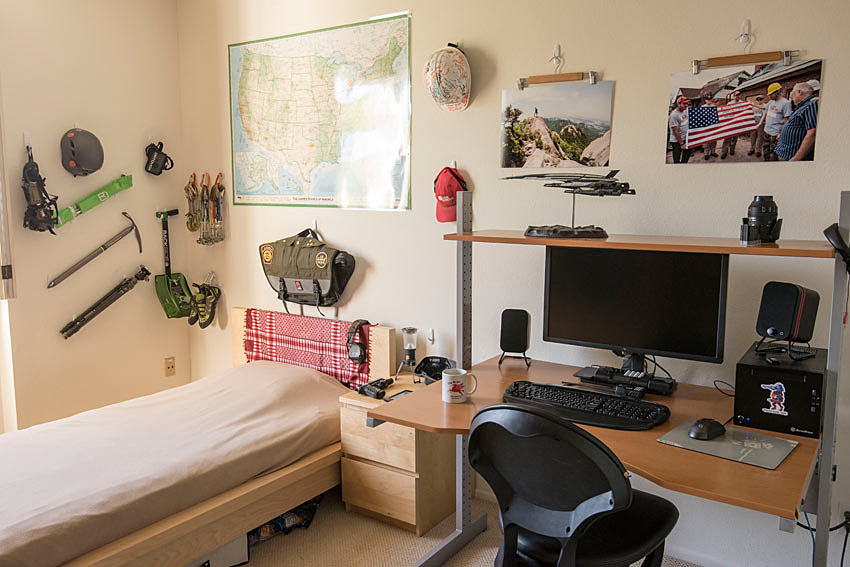
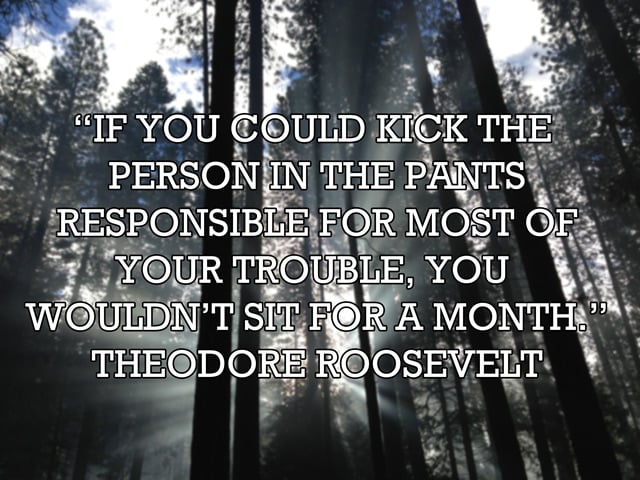
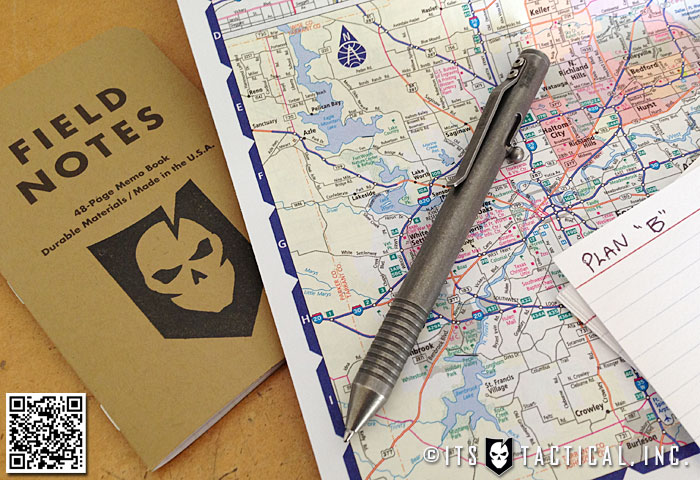
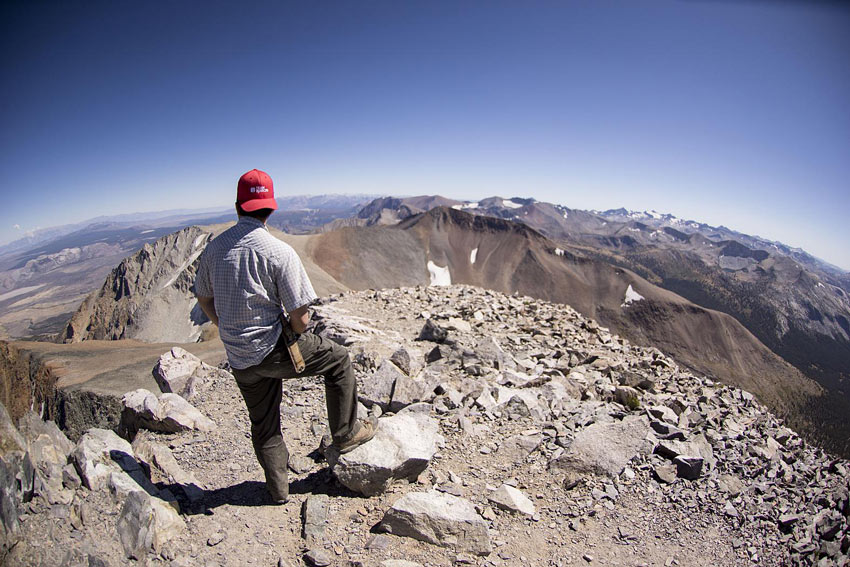

Discussion